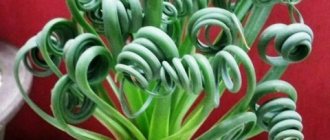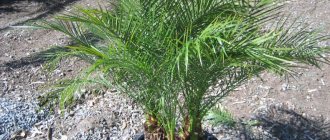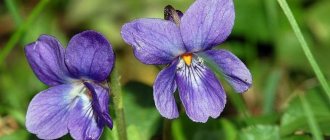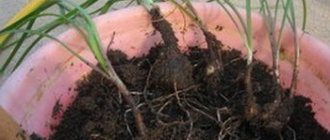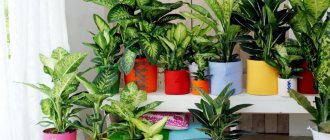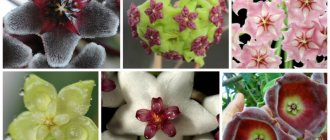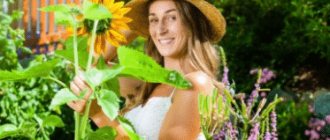Bouvardia is a member of the Rubiaceae family that is native to the subtropics of Central America. Bouvardia looks like a shrub and is an evergreen. It can reach a height of one and a half meters. The branches of Bouvardia are weakly branched, and the stems have long and round leaves.
This representative of the Madder family begins to bloom in late spring. This wonderful period ends at the beginning of summer, and sometimes lasts until mid-autumn. Houseplants Bouvardia produce inflorescences on their stems in the form of shields, each of which reaches 15 centimeters in diameter. Tubular flowers in shades of white to bright red grow at the ends of new stems. Some types of plants begin to bloom in May, and bloom only in early December.
Description of Bouvardie
Bouvardia is a perennial bush, the size of which depends on the variety. It is grown both in gardens and at home. The stems grow straight up , pointed leaves grow from the trunk, framing the inflorescence at the top.
The flower looks like a tube with 4 petals bent outward and exudes a light aroma. Due to the group of flowers, a spherical inflorescence is formed on a high peduncle. It is widely used by designers in bouquet arrangements for wedding photos.
The shrub is a perennial, reaching a height of up to 1 m. Low-growing varieties of Bouvardia .
Preferences
Bouvardia is a short-day plant. This means that the flowers develop in less than 12 hours of light. By artificially changing the length of the day, making conditions darker or lighter, regular production can be achieved throughout the year.
It is a tough, long-lasting shrub that requires little extra care once established. Bouvardia has excellent heat and sun tolerance and moderate drought tolerance once established. It is even included in the list of plants suitable for propagation. However, it requires fertile, well-drained soil in a warm, sheltered location. Prefers light shade and is sensitive to frost.
Main types
Varieties of bouvardia differ in the color and height of the bush.
Bouvardia yellow bouvardia flava
The telling name is given for the yellow color of the flowers. The tall bush grows up to 1.5 m, which is more suitable for cultivation in garden plots.
Bouvardia longiflora
This type of Bouvardia is distinguished by its longer flowers, which form an inflorescence at the top of the stem, reaching a height of up to 90 cm. The color range varies from white to pink.
Bouvardia jasminiflora bouvardia jasminiflora
Similar to jasmine, white with fragrant flowers. Plant height ranges from 60 to 90 cm. Unlike other species, it blooms in winter.
Bouvardia domestica
A specially designed variety for growing on windowsills. The dimensions of the plant are more compact, the height reaches 70 cm . Home bouvardia, the flower of which has smooth or double petals, blooms in summer or autumn.
The color range is wide due to the variety of pink and crimson shades. Bouvardia rosea is very popular
How to care for Bouvardia at home
The bouvardia bush needs watering, a sufficient level of air humidity, proper pruning and fertilizing.
Watering and air humidity
During the period of active growth, water the bouvardia moderately, avoiding stagnation of moisture at the roots. Between waterings, the soil should dry out by 2-3 cm, which can be checked with a toothpick. In winter, watering should be reduced even more, especially when the air temperature drops.
Also, during the growing season, average air humidity levels should be maintained (approximately 60-70%). To do this, periodically spray the plant with a fine spray. When bouvardia blooms, place an artificial fountain or a regular container of water next to the flower.
For spraying and watering, it is necessary to use purified water (passed through a filter or left standing for at least a day), at room temperature.
How to feed
Feed the plant during the period of active growth and flowering (the second is especially important). You can use complex mineral fertilizers or special formulations for flowering crops. Regarding the frequency of fertilizer application and concentration of substances, follow the manufacturer’s recommendations. Bouvardia in bloom can be fed three times a month.
Trimming
Bouvardia should be pruned in autumn, early spring and after flowering. In terms of pruning, evergreen bouvardia is similar to boxwood: the bush can be given any desired shape. Spring pruning promotes growth; cut shoots to half their length. The rest of the time, carry out formative pruning according to your own taste.
Optimal growing conditions
In garden conditions Bouvardia is unpretentious ; you need to give it a place with sufficient lighting.
Home care is quite simple. For the windowsill, small pots of small depth are selected, which will be sufficient for a superficial root system.
Lighting
In natural habitats, comfortable conditions are the warm, illuminated areas of South America. Therefore, windows on the south or east side for a long period of illumination.
Advice! In summer, it will be good for bouvardia to breathe fresh air on the balcony or street, this will promote abundant flowering.
Temperature
During the period of flower formation, the temperature should be moderately warm, within 22 – 25 degrees. It’s good if it’s cooler at night than during the day, such as on the balcony.
In the winter season, all species, except Bouvardia jasminiflora, which blooms at this time, are removed to a cool place with a temperature of at least 10 degrees to rest.
Watering
During the active period, the plant is watered regularly in moderate quantities . The golden mean would be moistening after the top layer of soil dries before the first drops appear on the base of the pot.
Important! Bouvardia loves gentle watering, for which tap water should first be settled or rain (melt) water should be used.
In winter, watering is reduced to once a week.
To prevent root rot, the pot must have a small volume of soil with a bottom lined with drainage.
Air humidity
In the dry climate of an apartment, the leaves may become limp during the heating season, so it would not be superfluous to spray the bouvardia with water at room temperature a couple of times a month . This procedure will also remove accumulated dust from the plant.
In summer, especially in hot weather, it is useful to refresh the plant with evening spraying. You should not do this during the day so that the water on the leaves does not cause burns under the scorching sun.
Soil and fertilizing
loose, nutritious soil is suitable for bouvardia. You can buy ready-made soil for all indoor plants, adding a little sand or perlite to it for better aeration of the roots.
If you prepare the soil yourself, you will need:
- 2 parts peat.
- 4 parts turf soil.
- 1 part leaf soil
- 1 part sand or perlite.
Feeding is necessary during the period of rapid growth every 10 - 14 days. For the unpretentious Bouvardia, universal complex fertilizers for indoor plants are suitable. , fertilizing for flowering crops can be .
In winter, fertilizers are not used as the plant is dormant.
Trimming
After the flowering period is completed, bouvardia is pruned to form a lush crown for the next season. Some gardeners also perform pruning in the spring season before active growth begins. You can leave up to a quarter of the length of the shoots .
Planting and growing
Landing Bouvardia is a simple and quick process. If you decide to do this from January to April, then it is better to use root suckers. Each part of the root should be placed in a ceramic pot filled with peat and sand. Place a layer of earth at least 15 mm thick on top. Place the container in a room where the temperature will not exceed 15 degrees Celsius.
From the end of spring to the beginning of winter, you can take bouvardia outside, as the danger of freezing goes away. Place the pot with the plant in a well-lit place, but do not allow it to be exposed to direct sunlight for a long time. Midday sun is extremely dangerous for bouvardia. The growing season, which lasts until the end of June, allows you to pinch the tops of young shoots a couple of times. However, you can only do this during a certain period of time, otherwise in the future such actions will only cause harm to the plant. A timely procedure allows bouvardia to bush better. At the end of August, be sure to bring the flower into the house. If you follow the watering regime and fertilization, your Bouvardia will bloom until the end of November.
Reproduction methods
several ways to get new plants .
Apical cuttings
During the period of pruning the bush, you need to use a sharp knife to cut off a cutting with 2 to 3 internodes from the top of the stem and place it in water until the roots appear. Shoots with well-grown roots should be planted in the ground in the spring, after which growth and flowering can begin immediately.
Dividing the bush
Suitable only for decorative purposes, renewing an overgrown bush . In this case, young plants will not appear, and flowering will still fade. Shake the thick bush out of the pot, carefully divide it by roots into parts, which are transplanted into new soil .
Sowing seeds
Seeds purchased in a store or obtained from home cultivation are sown in moist soil close to the surface and covered with a greenhouse. Germination requires a temperature of about 20 degrees and high humidity. The greenhouse with the sprouts is placed in a bright place and gradually opened. Only mature young Bouvardias can be replanted into separate pots.
Root suckers
Root suckers are buds that can produce new shoots . You can find them by the sprout that has sprung up next to the mother plant, which is separated and planted in a separate pot under the greenhouse.
Advice! This method should be used only if reproduction is not possible by other means.
Bouvardia: propagation of a houseplant
The Bouvardia plant is usually taken from cuttings. To prepare the cutting, you need to select the top part of the stem and cut it at such a level that there are approximately 3 leaves left on it. It is enough to place the cut off parts in a jar or glass of water, after which the cutting will grow new roots in a short time.
If Bouvardia has grown too much, then propagation can be done by dividing the bush. However, this is impractical, since the age of the plant will remain the same, and it will bloom much worse or will not bloom at all.
Tips for self-propagation of Bouvardia
To obtain a new bush of a plant, you can use sowing seeds, dividing the bush and cuttings. If you decide to propagate bouvardia using cuttings, you will need to cut the tops from the branches in February-March. They must have a length of at least 10 cm and 2-3 internodes. You can put the chopped branches in a vessel with water and quite quickly they will form root shoots. When they reach a centimeter length, you can plant 2–3 units in a small pot (7–9 cm in diameter) with soil suitable for adult specimens. Cuttings are also planted in containers with moistened sand and placed under a glass jar. In this case, it is necessary to ventilate the branches and moisten the soil if necessary. After the branches take root, they are transplanted into separate pots with soil.
How to deal with diseases and pests
Bouvardia is not often exposed to disease; as a rule, this is a consequence of improper care .
- Root rot. The most dangerous disease is due to waterlogging of the soil. By replanting it in new soil, you can try to save the flower. At the same time, it is better to germinate a new cutting .
- Spider mites and aphids. Frequent pests of indoor plants can get to Bouvardia from neighboring flowers. This often reduces the resistance of the bush, so in addition to spraying with an anti-parasite agent (for example, Fitoverm), regular fertilizing must be applied.
- Leaf chlorosis. Occurs when the quality of water for irrigation is poor. Leaves turn yellow and may fall off. Feeding with iron and regular watering with settled water solve the problem
This video shows how Bouvardia is grown for sale.
Signs and superstitions about bouvardie
Seeing Bouvardia inflorescences in a dream promises changes in your personal life: single people will meet their destiny, and couples will have a wedding celebration.
The names of plants also carry a certain meaning. So, translated from the Victorian language, belladonna literally means “beautiful girl”; tea roses say: “I will never forget you”; Our humble Bouvardia symbolizes enthusiasm, positivity and love for life. Be inspired by the exquisite beauty of the plant and feel free to grow Bouvardia at home, all your efforts will be rewarded with beautiful flowering.
Meet bouvardia, "bush fireworks" or "hummingbird flower"
Bouvardia is a representative of the Rubiaceae family, which can quite successfully grow on your windowsill, but can be found in the wild in Mexico or Central America. The indicators and characteristics of the plant will vary depending on the species, so you can meet Bouvardia in the form of a half-meter plant, or a beauty that has reached one and a half meters. The plant consists of an erect stem, as well as rare internodes. The leaves have short petioles and are whorled or opposite. In shape, each leaf resembles an elongated egg, with a maximum mark of 11 cm. Each oval leaf has a pointed tip. It is possible to come across Bouvardia, where the foliage is lanceolate or broadly lanceolate. In any case, the surface of the leaves is quite smooth, and may even be leathery.
Flowering is the culmination of the growing season, so special attention is paid to this event. Bouvardia begins to delight with the beauty of its inflorescences at the start of summer, and ends in the fall or closer to the first frost. The flowering is formed like a bouquet or an armful, because a large number of inflorescences are located at the tip of the peduncle and delight others with lush flowering. The diameter of such flowers can be from several centimeters and even up to more than 10 cm. It is noteworthy that the shoots where the inflorescences form are the same year and are cut off after flowering is complete. The type of inflorescences is tubular, which consists of four petals that bend slightly near the tips. The color scheme can be very different, because this is a feature of the species. Most often, bouvardia can be found in all shades of pink, yellow and white.
Use in folk medicine
Bouvardia has been the subject of several scientific studies recently, which have generally supported the plant's medicinal uses. From these studies it follows that this wonderful plant has medicinal properties.
In southwestern Nigeria, bouvardia is used for diabetes and leukemia. Extract of the leaves and stems of the plant is used as an ingredient in cosmetics.
In addition, extracts from Bouvardia are used to treat malaria, cancer and inflammatory diseases. They are effective in stimulating hair growth.
In Mexico, an infusion of the aerial parts is used for diabetes. A decoction of the plant is taken orally to treat kidney stones in Colombia, and in general
The plant is used as an adjunctive therapy as an antioxidant, anti-inflammatory, antinociceptive and analgesic.
Agricultural technology
Bouvardia - caring for the plant does not cause gardeners much trouble; it is an unpretentious plant with which there are no big difficulties.
But it is still necessary to comply with some conditions. Bouvardia grows and blooms well in bright, diffused light - it does not need to be placed in direct sunlight, but a high level of lighting must be provided.
The best temperature for bouvardia is within 20-25 degrees. If bouvardia does not bloom in winter, a dormant period is created for it, reducing the temperature for it to 10-12 degrees. You can’t do it any lower, the leaves will freeze and begin to fall off. At home, at this time, it is better to place the flower pot on the windowsill on the north or west side, where there is not too much light and heat.
Watering bouvardia growing at home should be moderate; water the flower not too much, focusing on the condition of the soil - if it has dried to a depth of 2-3 cm, watering is necessary. From an excess of moisture, the roots and stems will begin to rot, and the flower will die.
Bouvardia is not a whimsical plant.
Another sign that determines whether a flower needs a new portion of water is the condition of the leaves. If they become lethargic, watering is necessary; if not, the plant does not need to be watered.
Water the bouvardia with water at room temperature, free of chlorine and other harmful impurities. At home, you can use a household filter to purify water intended for watering a flower.
Bouvardia does not require high humidity, but from time to time it needs to be rinsed in the shower to wash away the dust that is clearly visible on the leaves.
Shoots on the stems of bouvardia in the first year of life are regularly pinched, and then cut by half in spring and autumn before the start of the growing season. Such measures will give the bush the required size, a more magnificent shape and abundant flowering.
The soil for bouvardia should be light, with good air and moisture permeability. It can be purchased at a specialized store, or made independently from peat, soil and sand with the addition of perlite or vermiculite.
Bouvardia is fed with mineral fertilizers during growth once every 15 days. Fertilizers for flowering plants are suitable for this purpose. In winter they do not fertilize.
Bouvardia is famous for its beautiful, lush flowering, but both in nature and at home it blooms well only in the second year of life. Then flowering decreases, and after 3-4 years it stops altogether. To get a flowering plant in the spring, you need to transplant annual young shoots into large pots.
Cuttings are the fastest and most effective way to propagate Bouvardia at home. Shoots with 2-3 internodes are suitable for these purposes; if you place the cuttings in a glass of water, roots appear quickly.
Another way to propagate bouvardia at home is by dividing overgrown bushes, but it is not very effective because it does not promote plant renewal and does not stimulate its flowering.
Bouvardia is resistant to many diseases and pests, but can get sick from stagnation of water in the soil - its roots will begin to rot. To avoid this, plant the flower in a container with a high drainage layer.
The affected plant is inspected, healthy cuttings are cut off for further cultivation, and the damaged part is thrown away.
Another common Bouvardia disease is leaf chlorosis, which develops due to watering with poor quality water. To cure the plant, it is fed with iron chelate.
Aphids that may attack a flower are washed off with water in the shower.

